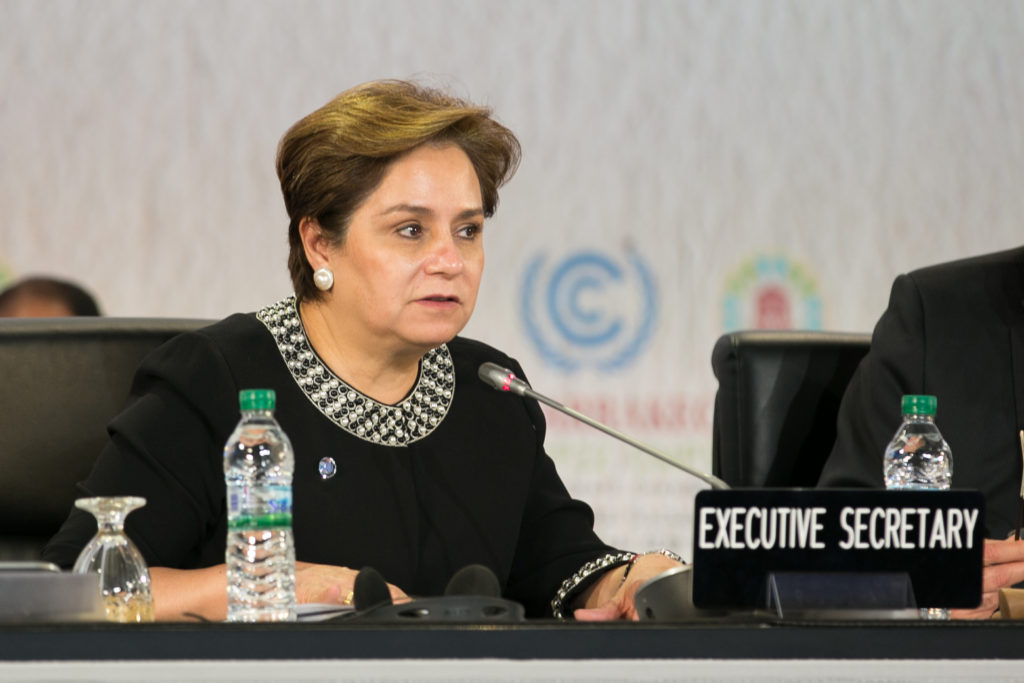The network of institutions created during the last 25 years and the growth of adaptation-related initiatives under the UN climate change process has helped stimulate significant on-the-ground action to build resilience to the inevitable impacts of climate change around the globe.

This is the key conclusion of a report entitled “25 Years of Adaptation Under the UNFCCC”, which offers an overview of the adaptation architecture under the UN Framework Convention on Climate Change (UNFCCC) process and how it has evolved since 1994, the year the Convention entered into force. The report was launched at the UN Climate Change Conference COP25 in Madrid, Spain in December 2019 by the Adaptation Committee.
For example, the UNFCCC process has led to 17 countries so far submitting their national adaptation plans (NAPs), with 120 developing countries working on their NAPs. These plans contain tangible and concrete steps that can help countries build a bridge to a climate-resilient future, such as by climate-proofing infrastructure across sectors, or promoting climate-resilient agriculture to ensure food security.
The Lima Adaptation Knowledge Initiative, a joint action pledge under the Nairobi work programme, has so far identified over 85 priority adaptation knowledge gaps across six subregions related to areas such as health, water and agriculture, and helped catalyse action such as enhanced dissemination and use of knowledge from practical adaptation activities to bridge these gaps.
Additionally, the various funds connected with the UNFCCC process continuously support a wide range of concrete adaptation initiatives, such as helping coastal communities better protect themselves against floods through resilient housing, or helping farmers adopt climate-smart agricultural practices.
The report tells the story of how work on adaptation under the UNFCCC process progressed over time. Initially this work addressed the question of “do we need to adapt?” With the publication of the third assessment report of the IPCC in 2001, countries began actively planning and implementing adaptation measures, and the question moved to “how do we adapt?”
The Cancun Adaptation Framework, a major milestone in the history of adaptation under the UNFCCC, focused attention on the question of “how do we integrate adaptation into relevant social, economic and environmental policies and actions?” Later, with the adoption of the 2015 Paris Agreement, the question that governments began to focus on with respect to adaptation was “how can we scale up adaptation action in a holistic and nationally determined, yet collectively ambitious, manner?”
As the report illustrates, the expansion of institutions and initiatives explicitly mandated to support countries’ adaptation efforts included work programmes, such as the LDC work programme and the Nairobi work programme; instruments such as National Adaptation Programmes of Action (NAPAs) and National Adaptation Plans; as well as bodies such as the Adaptation Committee, the Least Developed Countries Expert Group (LEG), the Executive Committee of the Warsaw International Mechanism for Loss and Damage, and more.
Beyond these efforts to strengthen technical and institutional capacities, over the years the UNFCCC process has also increasingly provided financial and technological support for planning, implementing and evaluating adaptation measures. This includes funding through the Global Environment Facility (GEF), Green Climate Fund (GCF), and Adaptation Fund, as well as technology-related support through the Climate Technology Centre and Network (CTCN).
The GEF supports adaptation to climate change in developing countries through the Least Developed Countries Fund (LDCF), which supports adaptation needs in least developed countries (LDCs), and the Special Climate Change Fund (SCCF), accessible by all developing countries. Over the past 27 years, GEF resources have contributed significantly to adaptation efforts, helping to deliver vulnerability reduction for more than 11 million people in 130 countries.
The Green Climate Fund Readiness Programme has provided developing countries a one-time grant allocation of up to $3 million per country for the formulation of NAPs and/or other adaptation planning processes. As of November 2019:
- GCF has received adaptation planning proposals from 81 countries under its Readiness Programme.
- GCF has approved 35 proposals, with 13 more in the final stages of approval, totalling 48 proposals with a combined value of $116 million.
The Adaptation Fund has supported a wealth of adaptation projects in developing countries, including in the Caribbean island of Barbuda, which was devastated by Hurricane Irma in September 2017. The Adaptation Fund has been financing a $10 million climate change adaptation project here since March 2017.
Meanwhile, an example of technology-related support provided by the CTCN is the development of Kurunegala in Sri Lanka as a climate smart city to address current climate vulnerabilities, including increasing extreme heat conditions, periods of flooding, and decreasing drinking water supply.
Looking ahead, the report concludes with an overview of the global stocktake – a cyclical mechanism established to review progress and enhance action and support towards the goals of the Paris Agreement – and what it will accomplish in relation to adaptation.
This will help shed light on the scale and success of adaptation efforts, as well as on where more work is needed within and outside the UNFCCC process to accelerate these efforts.
To launch the report, the Adaptation Committee invited members of other constituted bodies working on adaptation to reflect on the progress to date in advancing action on adaptation under the UNFCCC and discuss how to build on this progress moving forward.
Representatives from the Least Developed Countries Expert Group (LEG), the Executive Committee of the Warsaw International Mechanism for Loss and Damage, and the Facilitative Working Group of the Local Communities and Indigenous Peoples Platform joined the discussion to share their insights on the various institutions, bodies and mechanisms addressing adaptation and the evolving priorities that gave rise to them.
